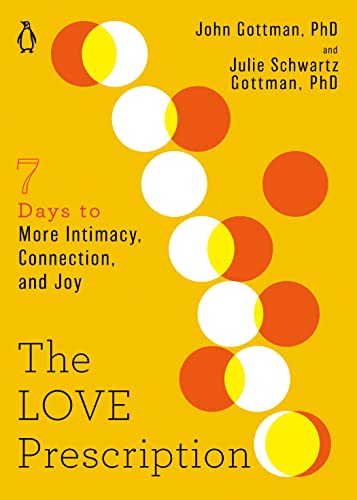In the simplest sense, a boundary separates one thing from another. A fence is a boundary between two properties; our skin is the boundary between our organs and the outside world. A boundary is the line where one thing ends, and another begins.
When we set a boundary with another person, we create some sort of separation between us. We might imagine our boundaries as shields that protect us from things that would threaten our well-being, such as others’ rudeness, others’ emotional dumping, unwanted touch, or commitments we don’t have the time and space for. Boundaries enable us to honor our limits—what works for us and what doesn’t—and design our lives and relationships around those limits.
Ultimately, boundaries are a recognition that we can’t control what others say or do, but we can control how we respond and what we allow into our environment. That’s what boundaries are all about. Although boundaries create separation in the short term, they are actually necessary and healthy in all relationships.
BOUNDARIES VS. REQUESTS
When we make requests of others, we ask them to change their behavior.
But when we set a boundary, we change our own behavior to protect ourselves, our needs, and our limits. As we discussed in the previous chapter, requests are, at their core, collaborative: a successful request requires another person to change their actions. Boundaries, on the other hand, don’t require others’ participation. When we set a boundary, we are assessing what doesn’t work for us and acting accordingly. These examples demonstrate the difference between requests and boundaries.
As you can see in these examples, our boundaries aren’t about changing other people: they’re about setting clear limits for what we will and will not tolerate from other people. For this reason, boundaries aren’t tools to get more of something from someone. We can’t “boundary” a person into giving us more affection, attention, kindness, or collaboration. We can ask them for more—that’s what requests are all about—but ultimately, boundaries are about separating ourselves from situations that don’t meet our needs, or interactions that make us feel unsafe, unseen, or harmed in some way.
COMMUNICATING OUR BOUNDARIES
How we communicate our boundaries depends on our situation. We might use:
The Short and Sweet Approach
The short and sweet approach tends to work best when others make requests of us that we can’t or don’t wish to fulfill. Perhaps our sister asks if she can borrow our car; perhaps our date asks if we’d like to go back to their apartment; perhaps a community member asks if we can volunteer at the neighborhood bake sale. In these cases, a clear, straightforward boundary will do:
• “No.”
• “No thank you.”
• “I can’t.”
• “I don’t have time.”
• “Not today.”
• “That’s not going to work for me.”
“I don’t have time for that right now.”
• “Now’s not a good time.”
• “Maybe some other time.”
The I-Statement Approach
Like we discussed in the prior chapter, the I-statement is a four-part communication tool that helps us be direct about our feelings and needs:
“I feel _________________ when you _________________ because_________________. I need _________________.”
When setting boundaries, the I-statement looks like: “I feel overwhelmed when you try to talk things out moments after an argument because I haven’t had time to process on my own. I need to wait at least an hour to cool down before discussing it with you” or “I feel upset when you discuss my mental health issues with the family because it violates my privacy. I need privacy, so I will keep information about my mental health to myself from now on.”
The Radical Transparency Approach
We can also use the radical transparency approach to set boundaries. As a reminder, this approach works best with people you trust: people who care for your well-being and are unlikely to weaponize the vulnerability of this approach against you.
- “It’s hard for me to say this, but I want to be honest with you: _____________________________________ .”
- “I know that in the past I’ve ______________________________________, but I’m trying to take better care of myself now, so I can’t continue to ______________________________________ .”
- “I’m afraid of hurting you, but it’s important to me that we can be honest with each other. I want you to know that I’m no longer able to ______________________________________ .”
- “I’m nervous to say this, but I’m trying to be more honest with the people I love, so I need to tell you that I can’t ______________________________________ .”
Radical transparency looks like: “Dad, I’m afraid of hurting you, but it’s important to me that we can be honest with each other. I want you to know that I can’t listen when you vent about Mom anymore. It puts me in the middle and I’m not comfortable playing that role” or “Gloria, I know that in the past I’ve joined you and your friends for the annual retreat, but I’m trying to save money this year, so I can’t make it.”
The Speaking Up Approach
Sometimes, we want to speak up as a means of making our own beliefs known. Especially if someone is expressing values or ideals we don’t agree with, speaking up can be a way to both honor our integrity and insert a mental boundary: separation between what they believe and what we believe. Speaking up can look like saying, “I disagree,” “I don’t share your opinion,” “I actually believe that _____,” or “I find what
you’re saying to be sexist/racist/transphobic.”
PUTTING BOUNDARIES INTO ACTION
If we set a boundary that a certain behavior doesn’t work for us, we need to remove ourselves from that behavior when it arises. Otherwise, our boundary is a meaningless statement that offers us no protection. If you set a boundary that you can’t participate in gossip anymore, then enacting it looks like exiting the interaction when someone starts gossiping. If you tell your mom that you can’t take her calls during work hours anymore, enacting that boundary means letting the phone go to voicemail when she calls you during a meeting. If you set a boundary that you won’t continue a conversation when your spouse is yelling, enacting it looks like leaving the conversation when your spouse yells.
Other people may not like our boundaries or may push back against them—we’ll discuss this soon—but ultimately, because our boundaries are about our own actions, enacting them is always within our control.
DISENGAGING AS BOUNDARY-SETTING
When we disengage, we exit an interaction that is harmful to us. By disengaging, we acknowledge that we can’t control others’ actions, but we can control the part we play in our dynamic. Instead of playing tug-of-war, we drop the rope. For the longest time, the idea of disengaging to set boundaries felt strange to me. After all, I was trying to get better at speaking up, and this felt like the opposite of speaking up. I worried that disengaging was the same as avoiding conflict: something I did in my people-pleasing days. However, I quickly learned that disengaging as a form of people-pleasing is very different from disengaging as a form of boundary-setting.
For years, one of my family members had made judgmental comments about other people’s weight. It bothered me to no end. I’d spent years struggling with my weight, as had many of my loved ones, and I found these comments callous and dehumanizing. I tried so many times to convince them to stop, but it never worked. They thought I was being “too sensitive” and taking things “too seriously.” No matter how much I argued and cajoled, they wouldn’t change.
These frequent debates took a toll on me. After every single one, I felt frustration and rage, and it took hours for me to feel calm again. Eventually, I realized that I was trying to change someone who wouldn’t change and harming myself in the process. So instead of continuing to speak up, I disengaged. When they made comments about people’s weight, I didn’t reply. I didn’t respond to the text; I ended the phone call; I left the room. I couldn’t control them, but I could control whether I dignified their comments with my participation and my presence.
Disengaging from a place of people-pleasing is fear-based. When we disengage out of fear, we’re thinking: “I’m afraid to speak up because I want them to like me,” or “I don’t want to rock the boat, so I better stay quiet,” or “I don’t want them to know I have this need because I’m afraid they’ll judge me, so I won’t say anything.”
Disengaging as a boundary is power-based. When we disengage as a boundary, we’re thinking: “I can’t control how they treat me, but I can control how much negative treatment I choose to endure,” or “I will not spend my valuable time and energy debating this once again,” or “I will not dignify this rude comment with a response.”
Sometimes, a person’s behavior is so hurtful that our only option is to leave the relationship entirely. Other times, we find that we can maintain a relationship if we disengage from unpleasant interactions, or decrease our degree of intimacy over time. There are six boundary strategies—three short-term strategies and three big-picture strategies—that we can use to disengage in this manner.
STOP People Pleasing and Find Your Power is now available as hardcover, ebook, and audiobook.












